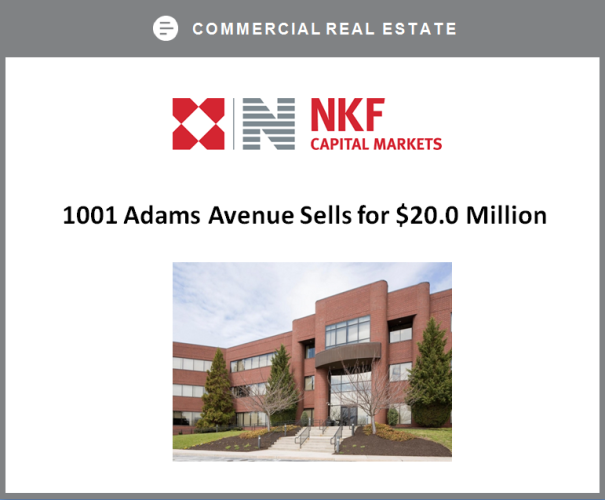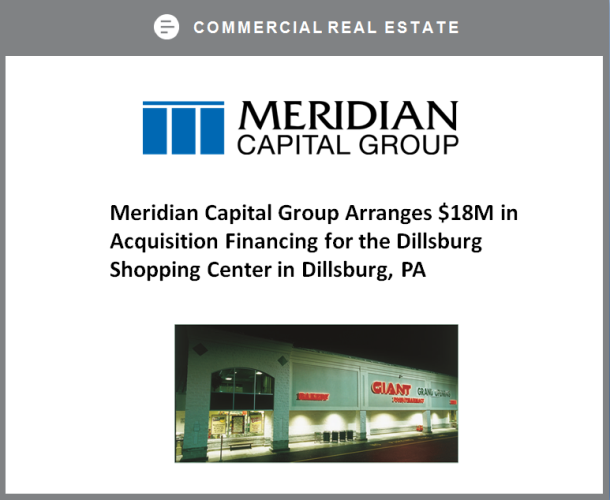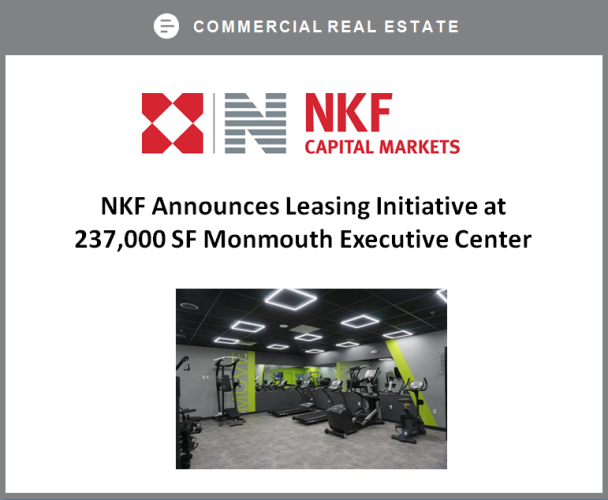F.N.B. Corporation (NYSE: FNB) reported earnings for the second quarter of 2019 with net income available to common stockholders of $93.2 million, or $0.29 per diluted common share. Comparatively, second quarter of 2018 net income available to common stockholders totaled $83.2 million, or $0.26 per diluted common share, and first quarter of 2019 net income available to common stockholders totaled $92.1 million, or $0.28 per diluted common share. On an operating basis, second quarter of 2019 earnings per diluted common share (non-GAAP) was also $0.29, excluding $2.9 million in branch consolidation costs. Operating earnings per diluted common share (non-GAAP) for the second quarter of 2018 was $0.27, excluding $6.6 million in branch consolidation costs and a $0.9 million discretionary 401(k) contribution, and $0.29 in the first quarter of 2019, excluding $1.6 million in branch consolidation costs.
"We are very pleased with our strong performance during the second quarter and first half of 2019. During the second quarter, earnings per share grew 12% compared to the prior year, and our asset quality continues to trend positively. The second quarter's results included 12% annualized revenue growth driven by record noninterest income of $75 million, which includes record capital markets and mortgage banking revenue contribution. Operating return on tangible common equity was more than 17%, and expenses were well-controlled, as the efficiency ratio equaled 54%," commented Chairman, President, and Chief Executive Officer, Vincent J. Delie, Jr. "We look to continue the strong momentum established during the first half across our legacy and expansion markets as we continue building on our success."
Second Quarter 2019 Highlights(All comparisons refer to the second quarter of 2018, except as noted)
- Growth in total average loans was $1.3 billion, or 6.1%, with average commercial loan growth of $791 million, or 5.9%, and average consumer loan growth of $524 million, or 6.6%. Compared to the first quarter of 2019, total average loans grew $380 million, or 6.8% annualized, with average commercial loan growth of $288 million, or 8.3% annualized, and average consumer loan growth of $92 million, or 4.4%, annualized.
- Total average deposits grew $1.4 billion, or 6.1%, including an increase in average non-interest-bearing deposits of $305 million, or 5.3%, an increase in interest-bearing demand deposits of $507 million, or 5.5%, and an increase in average time deposits of $661 million, or 13.7%. Compared to the first quarter of 2019, total average deposits grew $454 million, or 7.8% annualized.
- The loan to deposit ratio was 95.0% at June 30, 2019, compared to 96.1%.
- The net interest margin (FTE) (non-GAAP) declined 31 basis points to 3.20% from 3.51%, reflecting the sale of Regency Finance Company (Regency) in the third quarter of 2018 and a smaller contribution from cash recoveries on acquired loans. Regency contributed 12 basis points to net interest margin in the second quarter of 2018, while the contribution from cash recoveries declined 14 basis points.
- Total revenue increased 0.3% to $305.2 million, reflecting a 15.3% increase in non-interest income, partially offset by a 3.7% decrease in net interest income. The decrease in net interest income was largely attributable to the sale of Regency and lower acquired loan cash recoveries.
- Non-interest income increased $10.0 million, or 15.3%. Capital markets income grew 68.6%, reflecting strong interest rate derivative and syndications activity, while trust income grew 8.5%. Mortgage banking operations income increased $1.7 million due to a $3.5 million increase in gain on sale income, partially offset by a $1.3 millioninterest rate-related valuation adjustment on mortgage servicing rights.
- The efficiency ratio (non-GAAP) was 54.5%, compared to 55.6%.
- The annualized net charge-offs to total average loans ratio decreased 18 basis points to 0.16% from 0.34%, indicative of continued favorable credit quality trends and the sale of Regency.
- The ratio of the allowance for credit losses to total loans and leases remained stable at 0.83%, compared to 0.82%. The provision for credit losses of $11.5 million supported strong loan growth and exceeded net charge-offs of $9.0 million. The low level of net charge-offs reflects previous actions taken to reduce credit risk and favorable credit quality.
- The ratio of tangible common equity to tangible assets (non-GAAP) increased 53 basis points to 7.32%. Tangible book value per common share (non-GAAP) increased $0.85, or 13.6%, to $7.11.
Second Quarter 2019 Results – Comparison to Prior-Year Quarter
Net interest income totaled $230.4 million, decreasing $8.9 million, or 3.7%. The net interest margin (FTE) (non-GAAP) declined 31 basis points to 3.20%, primarily due to the sale of Regency in the third quarter of 2018 and a lower level of acquired loan cash recoveries. Regency contributed $8.5 million, or 12 basis points, to the net interest margin in the second quarter of 2018. The second quarter of 2019 included $0.6 million of cash recoveries compared to $10.2 million in the second quarter of 2018.
Total average earning assets increased $1.6 billion, or 5.7%, due primarily to average loan growth of $1.3 billion. The total yield on average earning assets increased to 4.37% from 4.30%, reflecting repricing of variable and adjustable rate loans and higher reinvestment rates on securities, partially offset by lower acquired loan cash recoveries. The total cost of funds increased to 1.20%, compared to 0.81%, reflecting higher interest rates on interest-bearing deposits and borrowings caused by three increases in benchmark interest rates during the last nine months of 2018 and increased deposit pricing competition. Average short-term borrowings decreased $381.5 million.
Average loans totaled $22.8 billion and increased $1.3 billion, or 6.1%, due to solid growth in the commercial and consumer portfolios. Average total commercial loan growth totaled $791 million, or 5.9%, including $669 million, or 15.6%, growth in commercial and industrial loans and $87 million, or 30.5%, growth in commercial leases. Commercial loan growth was led by strong activity in the Pittsburgh, Cleveland, Charlotte and Mid-Atlantic (Greater Baltimore-Washington D.C. markets) regions and continued growth in the equipment finance and asset-based lending businesses. Average consumer loan growth was $524 million, or 6.6%, as growth in indirect auto loans of $339 million, or 20.8%, and residential mortgage loans of $456 million, or 16.2%, was partially offset by a decline of $131 million, or 7.0%, in direct installment loans and a decline of $140 million, or 8.4%, in consumer lines of credit.
Average deposits totaled $23.9 billion, an increase of $1.4 billion, or 6.1%, reflecting growth in non-interest-bearing deposits of $305 million, or 5.3%; growth in interest-bearing demand deposits of $507 million, or 5.5%; and growth in time deposits of $661 million, or 13.7%, partially offset by a decline in savings of $100 million, or 3.8%. The growth in non-interest-bearing and interest-bearing deposits included household growth and new commercial relationships. The loan-to-deposit ratio was 95.0% at June 30, 2019, compared to 96.1% at June 30, 2018.
Non-interest income totaled $74.8 million, increasing $10.0 million, or 15.3%. Excluding branch consolidation-related losses on fixed assets of $0.5 million in the second quarter of 2019 and $3.7 million in the second quarter of 2018, non-interest income increased $6.8 million, or 9.9%. Capital markets income grew $4.0 million, or 68.6%, reflecting strong interest rate derivative and syndications activity, while trust income grew $0.5 million, or 8.5%. Mortgage banking operations income increased $1.7 million, or 28.2%, due to a $3.5 million increase in gain on sale income, partially offset by a $1.3 million interest rate-related valuation adjustment on mortgage servicing rights.
Non-interest expense totaled $175.2 million, decreasing $7.8 million, or 4.2%. Excluding branch consolidation costs of $2.3 million in the second quarter of 2019 and $2.9 million in the second quarter of 2018, and a $0.9 million discretionary 401(k) contribution in the second quarter of 2018, non-interest expense totaled $172.9 million and $179.2 million, respectively, decreasing 3.5%. The primary drivers of the decrease in non-interest expense were a $4.4 million, or 4.4%, decrease in salaries and benefits related primarily to the sale of Regency and a $3.2 million, or 34.4%, decrease in FDIC insurance expense. The decline in FDIC expense was primarily due to the elimination of the FDIC's large bank surcharge in the fourth quarter of 2018. The efficiency ratio (non-GAAP) improved to 54.5% from 55.6%.
The ratio of non-performing loans and other real estate owned (OREO) to total loans and OREO decreased 6 basis points to 0.55%. For the originated portfolio, the ratio of non-performing loans and OREO to total loans and OREO decreased 10 basis points to 0.61%. Total delinquency remains at satisfactory levels, and total originated delinquency, defined as total past due and non-accrual originated loans as a percentage of total originated loans, improved 2 basis points to 0.66%, compared to 0.68% at June 30, 2018.
The provision for credit losses totaled $11.5 million, compared to $15.6 million. The provision for credit losses supported strong loan growth and exceeded net charge-offs of $9.0 million, or 0.16% annualized of total average loans, which declined from $18.2 million, or 0.34%. For the originated portfolio, net charge-offs were $5.4 million, or 0.11% annualized of total average originated loans, compared to $14.8 million, or 0.36% annualized of total average originated loans. The decline in net charge-offs was partly attributable to the sale of Regency. The ratio of the allowance for credit losses to total loans and leases was 0.83% and 0.82% at June 30, 2019 and June 30, 2018, respectively. For the originated portfolio, the allowance for credit losses to total originated loans was 0.96%, compared to 1.02% at June 30, 2018, directionally consistent with credit quality.
The effective tax rate was 19.7%, compared to 19.4%.
The tangible common equity to tangible assets ratio (non-GAAP) increased 53 basis points to 7.32% at June 30, 2019, compared to 6.79% at June 30, 2018. The tangible book value per common share (non-GAAP) was $7.11 at June 30, 2019, an increase of $0.85, or 14%, from $6.26 at June 30, 2018.
Second Quarter 2019 Results – Comparison to Prior Quarter
Net interest income totaled $230.4 million and was essentially flat with the prior quarter total of $230.6 million. The net interest margin (FTE) (non-GAAP) declined 6 basis points to 3.20%. The total purchase accounting accretion impact decreased 2 basis points and included $7.5 million of incremental purchase accounting accretion and $0.6 million of cash recoveries on acquired loans, compared to $8.4 million and $1.0 million, respectively. First quarter interest expense included a net benefit of $1.6 million, or 2 basis points, for the recognition of the remaining discount on higher coupon acquired debt that was retired during the quarter.
Total average earning assets increased $314 million, or 4.3% annualized, due to average loan growth of $380 million, partially offset by a $135 million decrease in average securities in response to less favorable reinvestment rates. The total yield on earning assets was stable at 4.37%. The total cost of funds increased to 1.20% from 1.14%, reflecting higher interest rates on interest-bearing deposits caused by increased deposit price competition and time deposits repricing at higher rates. The cost of short-term borrowings decreased from 2.41% to 2.37% and the average balance decreased $595 million due to deposit growth and growth in opportunistic longer duration term funding. Average long-term borrowings increased $420 million, due primarily to FHLB advances at an average cost of 2.52%.
Average loans totaled $22.8 billion and increased $380 million, or 6.8% annualized, with average commercial loan growth of $288 million, or 8.3% annualized, and average consumer loan growth of $92 million, or 4.4% annualized. Commercial balances included growth of $236 million, or 20.1% annualized, in commercial and industrial loans, and growth of $44 million, or 2.0% annualized, in commercial real estate. Commercial loan growth was led by our Pittsburgh, Cleveland, Charlotte and Mid-Atlantic markets. Consumer balances reflected continued growth in residential mortgage loans of $101 million, or 12.9% annualized, and indirect auto loans of $22 million, or 4.6% annualized, partially offset by a decline of $31 million, or 8.0% annualized, in consumer lines of credit.
Average deposits totaled $23.9 billion and increased $454 million, or 7.8% annualized, due to growth of $176 million, or 12.0% annualized, in non-interest-bearing deposits; $143 million, or 5.9% annualized, in interest-bearing demand deposits; and $125 million, or 9.4% annualized, in time deposits. Deposit growth reflects continued growth in households and commercial customers, as well as seasonal balance growth.
The loan-to-deposit ratio was 95.0% at June 30, 2019, compared to 94.7% at March 31, 2019.
Non-interest income totaled $74.8 million, increasing $9.5 million, or 14.5%. Excluding branch consolidation-related losses on fixed assets of $0.5 million in the second quarter and $1.2 million in the first quarter, non-interest income increased $8.8 million, or 13.3%. Capital markets income increased $3.8 million, or 63%, due to strong interest rate derivative and syndications activity, with increased contributions from newer markets. Mortgage banking income increased $3.7 million, or 95%, due to a 71% increase in production volume driven by downward movement in interest rates compared to the prior period. Service charges increased $1.9 million, or 6%, from a seasonally low first quarter.
Non-interest expense totaled $175.2 million, an increase of $9.5 million, or 5.7%. Excluding branch consolidation costs of $2.3 million in the second quarter and $0.5 million in the first quarter, non-interest expense increased $7.6 million, or 4.6%. The primary drivers of the second quarter increase in non-interest expense were a $3.0 million, or 3.3%, increase in salaries and benefits related primarily to annual merit increases and increased commissions on banking activities. Additionally, marketing expense increased $1.6 million, or 69.7%, due to increased marketing campaigns throughout the footprint, and outside services increased $1.4 million, or 9%, due to the timing of certain charges such as director fees. The efficiency ratio (non-GAAP) equaled 54.5%, compared to 53.4%.
The ratio of non-performing loans and OREO to total loans and OREO decreased 3 basis points to 0.55%. For the originated portfolio, the ratio of non-performing loans and OREO to total loans and OREO increased 2 basis points to 0.61%. Total delinquency remains at favorable levels, and total originated delinquency, defined as total past due and non-accrual originated loans as a percentage of total originated loans, increased 3 basis points to 0.66%, compared to 0.63% at March 31, 2019.
The provision for credit losses totaled $11.5 million, compared to $13.6 million. The provision for credit losses supported strong loan growth and exceeded net charge-offs of $9.0 million, or 0.16% annualized of total average loans, compared to $7.6 million, or 0.14% annualized in the prior quarter. For the originated portfolio, net charge-offs were $5.4 million, or 0.11% annualized of total average originated loans, compared to $4.8 million or 0.10% annualized. The ratio of the allowance for credit losses to total loans and leases increased to 0.83% from 0.82% at March 31, 2019. For the originated portfolio, the allowance for credit losses to total originated loans increased to 0.96% from 0.94% at March 31, 2019.
The effective tax rate was 19.7%, compared to 19.3%.
The tangible common equity to tangible assets ratio (non-GAAP) increased 17 basis points to 7.32% at June 30, 2019, compared to 7.15% at March 31, 2019. The tangible book value per common share (non-GAAP) was $7.11 at June 30, 2019, an increase of $0.20 from March 31, 2019.
June 30, 2019 Year-To-Date Results - Comparison to Prior Year-To-Date Period
Net interest income totaled $461.0 million, decreasing $4.5 million, or 1.0%, reflecting the sale of Regency and a lower level of purchase accounting benefit, partially offset by average earning asset growth of $1.6 billion, or 6.0%. The net interest margin (FTE) (non-GAAP) contracted 22 basis points to 3.23%, reflecting the sale of Regency in the third quarter of 2018 and a lower level of cash recoveries on acquired loans. Regency contributed 12 basis points to net interest margin in the first half of 2018. The first six months of 2019 included $5.3 million of higher incremental purchase accounting accretion and $9.7 million of lower cash recoveries, compared to the first six months of 2018. The yield on earning assets increased 18 basis points to 4.37%, while the cost of funds increased 41 basis points to 1.17%, primarily due to competitive pressure on interest-bearing deposits.
Average loans totaled $22.6 billion, an increase of $1.3 billion, or 6.0%, due to solid origination activity across the footprint. Growth in average commercial loans totaled $697 million, or 5.2%, including growth of $574 million, or 13.5%, in commercial and industrial loans and growth of $93 million, or 33.1%, in commercial leases. Commercial growth was led by strong commercial activity in the Cleveland, Pittsburgh, Charlotte and Mid-Atlantic regions and continued growth in the equipment finance and asset-based lending businesses. Total average consumer loan growth of $573 million, or 7.3%, was led by strong growth in residential mortgage loans of $451 million and indirect auto loans of $403 million, partially offset by a decline of $149 million in consumer credit lines and a decline of $132 million in direct installment balances.
Average deposits totaled $23.6 billion and increased $1.3 billion, or 5.8%, due to average growth of $295 million, or 5.2%, in non-interest-bearing deposits; $386 million, or 4.1%, in interest-bearing demand deposits; and $686 million, or 14.5%, in time deposits.
Non-interest income totaled $140.2 million, increasing $7.8 million, or 5.9%. Excluding the $1.7 million and $3.7 millionlosses on fixed assets related to branch consolidations in the first six months of 2019 and 2018, respectively, non-interest income increased $5.9 million, or 4.3%, attributable to the continued growth of our fee-based businesses of capital markets (+43.7%), trust services (+6.9%), securities commissions and fees (+1.9%), and mortgage banking (+0.4%).
Non-interest expense totaled $341.0 million, decreasing $13.1 million, or 3.7%. The six months of 2019 included $2.8 million of branch consolidation expenses, while 2018 included $2.9 million of branch consolidation expenses and a $0.9 million discretionary 401(k) contribution made following tax reform. Excluding these expenses, total non-interest expense decreased $12.1 million, or 3.5%, attributable primarily to the elimination of the FDIC's large bank surcharge in the fourth quarter of 2018 and the sale of Regency in the third quarter of 2018. The efficiency ratio (non-GAAP) improved to 54.0%, compared to 55.7% in the first six months 2018.
The provision for credit losses was $25.1 million, compared to $30.0 million. Net charge-offs totaled $16.6 million, or 0.15%, of total average loans, compared to $28.9 million, or 0.27% in the first six months of 2018. Originated net charge-offs were 0.11% of total average originated loans, compared to 0.33%.
The effective tax rate was 19.5% for both the first six months of 2019 and 2018.
Use of Non-GAAP Financial Measures and Key Performance Indicators
To supplement our Consolidated Financial Statements presented in accordance with GAAP, we use certain non-GAAP financial measures, such as operating net income available to common stockholders, operating earnings per diluted common share, return on average tangible equity, return on average tangible common equity, return on average tangible assets, tangible book value per common share, the ratio of tangible equity to tangible assets, the ratio of tangible common equity to tangible assets, efficiency ratio, and net interest margin (FTE) to provide information useful to investors in understanding our operating performance and trends, and to facilitate comparisons with the performance of our peers. Management uses these measures internally to assess and better understand our underlying business performance and trends related to core business activities. The non-GAAP financial measures and key performance indicators we use may differ from the non-GAAP financial measures and key performance indicators other financial institutions use to assess their performance and trends.
These non-GAAP financial measures should be viewed as supplemental in nature, and not as a substitute for or superior to, our reported results prepared in accordance with GAAP. When non-GAAP financial measures are disclosed, the Securities and Exchange Commission's (SEC) Regulation G requires: (i) the presentation of the most directly comparable financial measure calculated and presented in accordance with GAAP and (ii) a reconciliation of the differences between the non-GAAP financial measure presented and the most directly comparable financial measure calculated and presented in accordance with GAAP. Reconciliations of non-GAAP operating measures to the most directly comparable GAAP financial measures are included in the tables at the end of this release under the heading "Reconciliations of Non-GAAP Financial Measures and Key Performance Indicators to GAAP".
Management believes charges such as branch consolidation costs and special one-time employee 401(k) contributions related to tax reform are not organic costs to run our operations and facilities. The branch consolidation charges principally represent expenses to satisfy contractual obligations of the closed branches without any useful ongoing benefit to us. These costs are specific to each individual transaction and may vary significantly based on the size and complexity of the transaction.
To provide more meaningful comparisons of net interest margin and efficiency ratio, we use net interest income on a taxable-equivalent basis in calculating net interest margin by increasing the interest income earned on tax-exempt assets (loans and investments) to make it fully equivalent to interest income earned on taxable investments (this adjustment is not permitted under GAAP). Taxable-equivalent amounts for the 2019 and 2018 periods were calculated using a federal statutory income tax rate of 21%.
About F.N.B. Corporation
F.N.B. Corporation (NYSE:FNB), headquartered in Pittsburgh, Pennsylvania, is a diversified financial services company operating in seven states and the District of Columbia. FNB's market coverage spans several major metropolitan areas including: Pittsburgh, Pennsylvania; Baltimore, Maryland; Cleveland, Ohio; Washington, D.C.; and Charlotte, Raleigh, Durham and the Piedmont Triad (Winston-Salem, Greensboro and High Point) in North Carolina. The Company has total assets of nearly $34 billion and approximately 380 banking offices throughout Pennsylvania, Ohio, Maryland, West Virginia, North Carolina and South Carolina.
FNB provides a full range of commercial banking, consumer banking and wealth management solutions through its subsidiary network which is led by its largest affiliate, First National Bank of Pennsylvania, founded in 1864. Commercial banking solutions include corporate banking, small business banking, investment real estate financing, government banking, business credit, capital markets and lease financing. The consumer banking segment provides a full line of consumer banking products and services, including deposit products, mortgage lending, consumer lending and a complete suite of mobile and online banking services. FNB's wealth management services include asset management, private banking and insurance.
The common stock of F.N.B. Corporation trades on the New York Stock Exchange under the symbol "FNB" and is included in Standard & Poor's MidCap 400 Index with the Global Industry Classification Standard (GICS) Regional Banks Sub-Industry Index. Customers, shareholders and investors can learn more about this regional financial institution by visiting the F.N.B. Corporation website at www.fnbcorporation.com.






